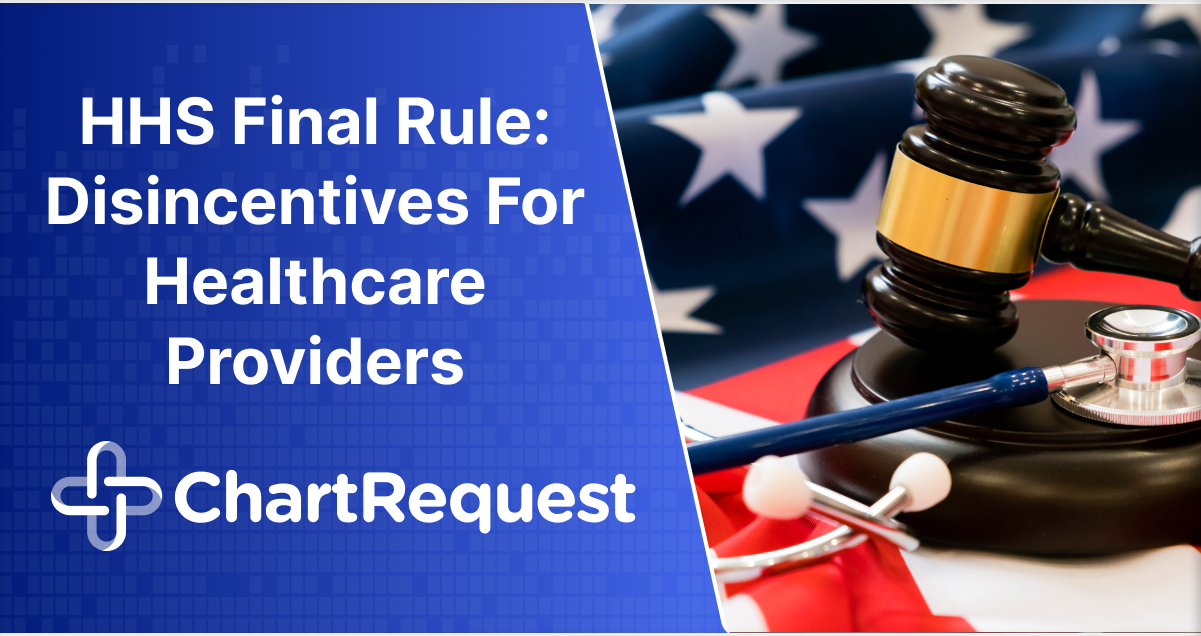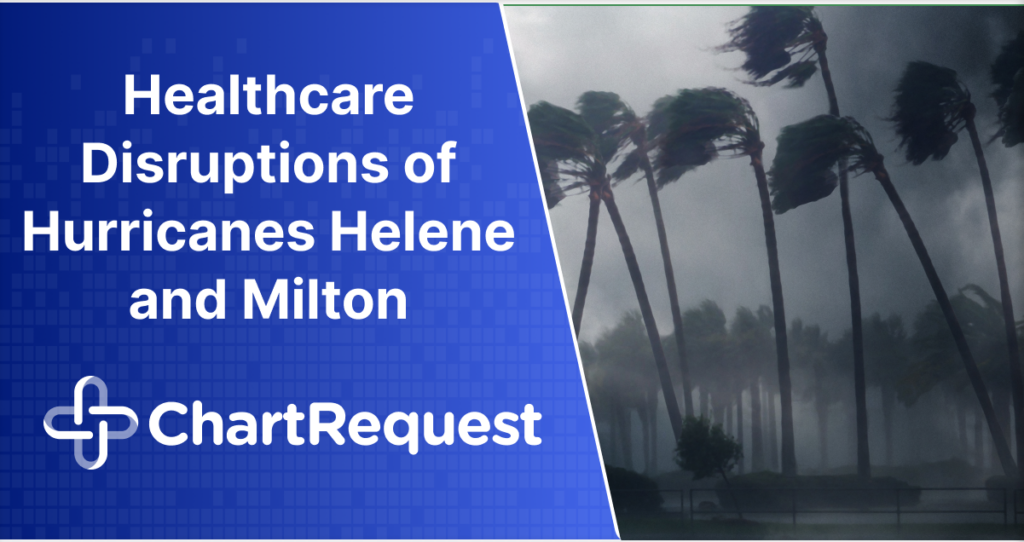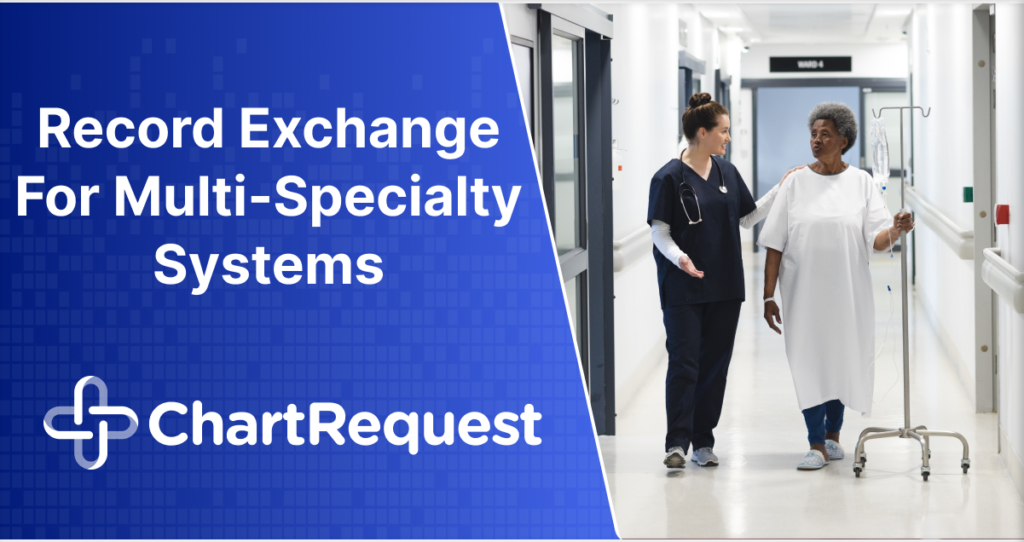We all saw it coming, but it’s finally here. The Department of Health and Human Services (HHS) finalized its disincentive rule for healthcare providers who engage in information blocking.
You probably heard about this proposal back in 2023, when the HHS debated the complementary language of the OIG “Final Rule.” Now, information blocking enforcement has defined parameters.
Don’t worry about digging through pages of dry regulatory policy — we did all that for you. Let’s explore what the HHS says and how your organization can prevent costly disincentives from impacting your budget and reputation.
Click here to see how ChartRequest can secure your record transfers and avoid HIPAA penalties.
The Final Rule Is In Effect: Here’s What Physicians Should Know
Information blocking is a significant issue in the healthcare industry — one so substantial that HHS developed a comprehensive disincentives policy in conjunction with OIG.
The plan was to strengthen the HIPAA Privacy Rule and discourage healthcare providers or other legal representatives from delaying the transfer of Protected Health Information (PHI) through tangible action.
Here are the steps the OIG takes to determine and enforce disincentives for information blocking:
- OIG receives a complaint from a requestor of PHI outlining why they believe a healthcare provider blocked the exchange of their medical records.
- OIG determines the complaint’s validity and may decide to proceed with a thorough investigation.
- If valid, OIG will perform an investigation, which may take weeks to months. This depends on the severity of the information blocking and what evidence they collect.
- If the provider is found to be engaging in information blocking activities, OIG will refer the at-fault healthcare provider to an “appropriate agency” to impose disincentives using authorities applicable to federal law.
- In many cases, the appropriate agency will be the Centers for Medicare & Medicaid Services (CMS), which has the authority to reduce payments via the Merit-based Incentive Payment System (MIPS).
- If a healthcare provider is subject to penalties, the Office of the National Coordinator for Health Information Technology (ONC) will post a public notice outlining the violation.
What would this framework look like in practice? Take the following hypothetical into consideration:
Denying a Request
Suppose a patient requests their medical charts from an orthopedic clinic to switch doctors. The clinic receives their request, but does not deliver the documents for three months — far exceeding the 30-day deadline outlined by HIPAA.
The orthopedic physicians do not have the staffing or resources to keep up with these requests and ultimately ignore them. Moreover, when the patient calls to follow up on the request, the clinic provides many excuses for not delivering the documents.
At this point, the patient believes the clinic is preventing them from continuing treatment and files a complaint with the HHS, which forwards it to the OIG.
The Investigations Begin
The OIG reaches out to the clinic suspected of information blocking. An initial interview with the custodians of PHI confirms the problems outlined by the complaint and prompts investigators to look deeper into the violation.
How the OIG investigates healthcare providers varies from practice to practice. This flexibility allows it to collect communication reports and interviews and determine the conduct of individuals involved in the violation.
Finally, the OIG reviews the information gathered and submits a comprehensive report to an appropriate agency for disincentive recommendations.
The “Appropriate Agency” Steps In
In 2023, the proposed disincentives rule caused some confusion among healthcare providers and patients. Particularly, when identifying an “appropriate agency” to enforce penalties.
The new rule finalizes the term “appropriate agency” in 45 CFR 171.102 to mean a government agency that establishes disincentives for healthcare providers the OIG determines to have committed info blocking.
In simpler terms, any component of HHS with predefined disincentives — like the Centers for Medicare and Medicaid Services (CMS) — can enforce these penalties on behalf of the Secretary of HHS.
Corresponding Penalties
Had the clinic missed the 30-day deadline by a week due to a natural disaster, an appropriate agency may issue corrective action with no other penalties. They may prioritize the transfer of the patient’s PHI and ensure that it reaches the proper channel within a reasonable timeframe. They may also audit the practice to rule out additional risks for future violations.
The clinic could comply with corrective actions, and the ONC would not list the organization on their public “wall of shame.”
Because the violation in this hypothetical scenario is egregious, the agency may send a notice with:
- A description of practice for the basis of investigation
- The basis for the application of disincentive
- The effect of the disincentive
- Other necessary info
The orthopedic clinic does have the right to file an administrative appeal. A successful appeal could prevent the ONC from enforcing any penalties, including a public notice of violation. However, in this scenario, the physicians’ chances of a successful appeal don’t look great.
The Effects of Disincentives and Penalties
Healthcare providers responsible for information blocking (including those that do not successfully appeal) will experience the following:
Disincentives for CAH
Critical Access Hospitals (CAH) responsible for information blocking will no longer be meaningful EHR users for the calendar year. They will also be ineligible to earn the three-quarters of annual market basket increases associated with qualifying as a meaningful EHR user.
The CMS will enforce a 100 percent reduction of reasonable costs from the 101 percent of reasonable expenses the CAH would be eligible for in an applicable year.
Disincentives for MIPs
The CMS may define an MIPS-eligible clinician (as defined in 42 CFR 414.1305 and including groups) as a non-meaningful EHR user in a performance period if they violate information blocking rules.
CMS has also finalized that MIPS-eligible clinicians who violate information blocking rules must report on MIPS’s Promoting Interoperability performance category with a zero score.
Disincentives for MSSP
A healthcare provider that is an accountable care organization (ACO), ACO participant, or ACO provider/supplier, if found responsible for information blocking, may not participate in the Shared Savings Program for at least one year.
Steps To Avoid Penalties
Now that these rules are in place, you may worry about your organization’s health information exchange procedures. After all, no respectable physician wants to jump through the hoops needed to recover from these steep penalties. Here are a few ways you can avoid information blocking and subsequent fines:
Remember Your Duty as a Healthcare Provider
It goes without saying that your patients come first. The fast and secure transfer of PHI will help you better coordinate care and improve your organization’s reputation among potential and existing patients.
Develop a comprehensive release of information policy and train your staff to ensure maximum compliance. This initial step may be challenging if you manage a smaller healthcare practice. However, ignoring your duties as a physician can land your business in hot water with HIPAA or the OIG if bottlenecks occur.
The record specialist team at ChartRequest can help you upgrade your health IT software for optimal results.
Invest In Modern EHR Management Technology
Many clinics around the country suffer from information blocking penalties due to outdated EHR methods. These issues can compound for facilities that do not have the staff or budget to maintain these platforms year-round.
At ChartRequest, we’ll do the heavy lifting for you. Our team of experts can manage record request authorizations, transfers, and communication so that you can assign staff to other duties.
Stay Current With Healthcare Regulations
The law is constantly changing, and not knowing which regulations are in effect could cause you to experience surprise setbacks. If you don’t have the time to research and adapt your record exchange policies to modern standards, partner with a 4.9 out of 5 star service like ChartRequest.
We will ensure that your data transfers comply with updated laws and regulations through our secure platform.
Is Your Practice Ready for the Final Rule?
The HHS final decision on disincentives for healthcare providers is active. It’s time to organize your practice before someone files a complaint.
Visit ChartRequest online to explore fixed-price subscriptions for your healthcare facility. A specialist can help you identify ways to improve your compliance, whether you have a current release of information vendor or not.
Do you have more questions about how disincentives could impact your healthcare organization? Follow us on LinkedIn for more news and to ask any questions you may have.









